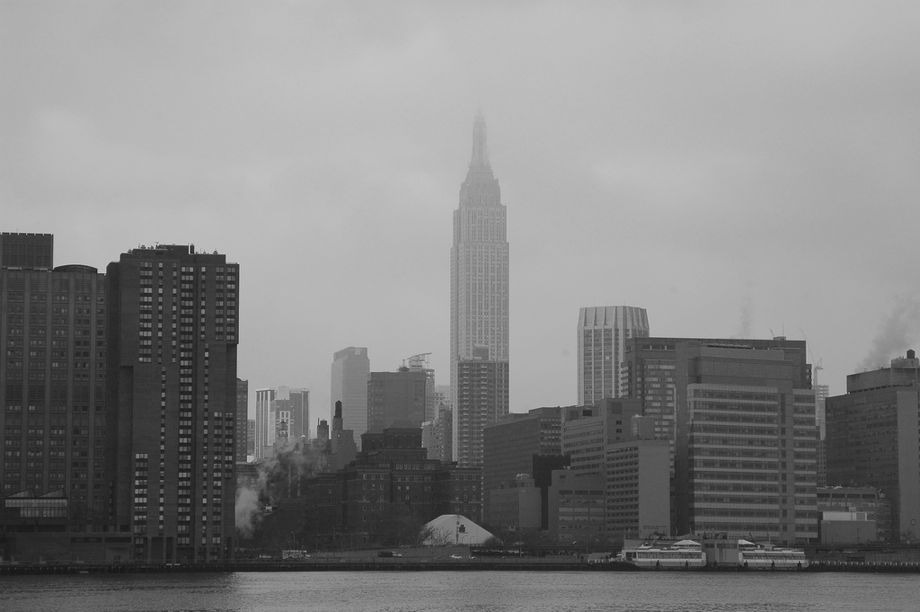The Day a Plane Crashed Into the Empire State Building

Courtesy of thinboyfatter via Flickr
By far the best design podcast around—and one of the best podcasts, period—is Roman Mars’ 99% Invisible. On it he covers design questions large and small, from his fascination with rebar to the history of slot machines to the great Los Angeles Red Car conspiracy. Here at The Eye, we cross-post his new episodes so you can check them out and host excerpts from the 99% Invisible blog, which offers complementary visuals for each episode.
This week, while the 99% Invisible team gets ready for weekly broadcasts starting in February, they invited producers Joe Richman and Samara Freemark from Radio Diaries to share a story. Since 1996, Radio Diaries has been producing documentaries for NPR's All Things Considered, often turning the recording gear over to the people they're documenting to allow them to tell their own stories.
This episode—about July 28, 1945, the day an Army bomber pilot on a routine ferry mission found himself lost in the fog over Manhattan and crashed into the Empire State Building—can be played below. Or keep reading to learn more.
On July 28, 1945, an airplane crashed into the Empire State Building. A B-25 bomber was flying a routine mission, bringing servicemen from Massachusetts to New York City.
Capt. William F. Smith, who had led some of the most dangerous missions in World War II in the European theater, was the pilot. The day was foggy. Smith called LaGuardia Airport and requested a clearance to land. With nearly zero visibility, the tower suggested that Smith stay in the air. He ignored air traffic control and started a descent that took him over midtown Manhattan.
Just as he straightened out, the clouds broke up enough for him to realize he was flying among skyscrapers.
The bomber crashed into the Empire State Building, the tallest building in the world at the time. The collision killed Smith, two others on the plane, and 11 people who worked inside the building.
When the plane hit, parts of the engine flew ahead and severed the lifting cables of two elevators on the 79th floor. The elevators crashed to the sub-basement. In one of the elevators was a 19-year-old elevator operator named Betty Lou Oliver. She broke her pelvis, back, and neck—but she survived.
It was a fluke of physics that saved Oliver's life. As the elevator plummeted from the 79th floor, a pocket of air built up underneath the elevator car, which acted like a cushion when Oliver reached the bottom.
The crash prompted new legislation that—for the first time—gave citizens the right to sue the federal government.
To learn more about what happened on July 28, 1945, and to see photos taken after the crash, check out the 99% Invisible post or listen to the show.
99% Invisible is distributed by PRX.
